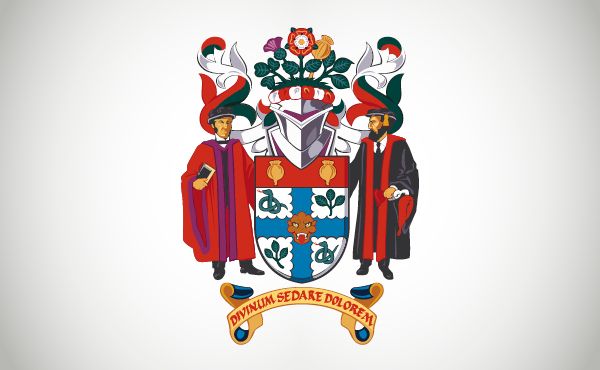A spot of history

Welcome to the very much work-in-progress history page, where we will be gradually building the beautifully chaotic story of anaesthesia as we progress ourselves through our training.
Please let us know if you’d like to contribute to this page - anaestheasier@gmail.com
A crude timeline of anaesthesia
- 1540 – Paracelsus found that oil of vitriol (ethanol and sulfuric acid) made chickens fall asleep for a while, thankfully reversibly
- Cocaine-laced saliva drooled into trephination wounds to provide local anaesthesia by the Incas
- 1665 Percival Christopher Wren wrote of his ideas to inject medications directly into the blood stream
- 1774 Joseph Priestley managed to liberate oxygen and produce nitrous oxide
- Around 1841 William E Clarke successfully administered ether to Miss Hobbie for removal of a tooth by Elija Pope
- October 16th 1846 – W. T. G. Morton used the first draw-over vaporiser to etherise Edward Gilbert Abbott while he had a venous malformation ligated in his neck by J.C. Warren
1847 was a solid year for anaesthesia:
- John Snow writes ‘The inhalation of the Vapour of Ether‘
- James Young Simpson uses chloroform for analgesia in labour
- John Snow then administered chloroform to Queen Victoria during her labour, and it was called anaesthesia á la reine
Spinal and Epidural Anaesthesia
The big players
- James Leonard Corning (1855-1923)
- Karl Koller ( 1858 – 1944)
- Walter Essex Wynter (1869-1945)
- Heinrich Irenaeus Quincke (1842-1922)
- August Bier (1861-1949)
- Theodore Tuffier (1857-1929)
- Arthur Edward James Barker (1850-1916)
- Achile Mario Dogliotti (1897-1966)
The factor most contributory to the tragic history, is the ease with which it can be performed by anyone
Year Book of obstetrics 1949 – regarding spinal anaesthesia
- 1853 Alexander Wood introduces the hollow needle and glass syringe
- 1855 Friedrich Gaedcke introduces the world to the joys of cocaine
- 1860 Albert Niemann isolated cocaine in crystalline form
- 1880 von Anrep documented the numbing and mydriatic effects of cocaine
1884
- Sigmund Freud wrote ‘Uber Coca’ and successfully cured the morphine addiction of his friend Ernst von Fleischl-Marxow, by replacing it with a flourishing cocaine addiction
- Karl Koller and Joseph Gärtner dropped cocaine solution into a frog’s eye, and noted that it abolished the corneal reflex
- They then tried on each other and stuck pins in their eyes
1885
- Corning maybe administers cocaine into the subarachnoid space by accident, but doesn’t know because the syringe was already attached so CSF flow could not be seen
- 1885 - William Halsted performs the first brachial plexus block
- 1891 Quincke describes a detailed technique for performing lumbar puncture
1898
- 16th August 1898 - August Bier successfully performed a leg amputation for tuberculosis on a 34 year old man under spinal anaesthesia
- Bier describes six patients whom he gave 20mg cocaine as spinal analgesia for lower limb operations who suffered nasty headache and vomiting
- He practised with his assistant Hildebrant
- Unfortunately when Hildebrant attempted to anaesthetise Bier, the syringe did not quite fit the needle, so ‘much cerebrospinal fluid was lost and the major part of the cocaine came out of the side‘
- Bier then performed the same on Hildebrant, and 5mg cocaine afforded him sufficient anaesthesia to tolerate the following:
tugging of pubic hair
hard pressure on the testes
sharp blow to the shin with an iron hammer
- To celebrate their achievements they proceded to wine, dine and smoke cigars, followed by a pounding positional headache the next day and vomiting suggesting a degree of meningeal irritation
- 1899 Tuffier uses intrathecal cocaine to provide spectacular analgesia to a young man with sarcoma in the leg, followed by a young woman with sarcoma of the thigh, which he then proceed to remove without causing any pain at all
- 1901 - Nicolae Racoviceanu-Pitești uses opioids in a spinal for the first time
- 1904 Fourneau discoveres Stovaine, which Bier then deemed satisfactory for adequate spinal anaesthesia, noting ‘it still needs improvement’
- 1905 W. E. Dixon, pharmacologist of Cambridge, demonstrated that sensory spinal fibres are more sensitive than motor fibres (Dixon’s Law)
- 1906 S.J. Meltzer found that injecting 1ml of 25% magnesium per 12kg of bodyweight into the subarachnoid space produced paralysis and analgesia four hours later with good operating conditions
- 1906 Dean, surgeon to the London Hospital, and first to surgically manage a perforated peptic ulcer remarked after using a spinal and the patient having near complete cardiovascular collapse:
We then transfused into the internal saphenous vein three pints of normal salt solution in the usual way, and to the fourth pint we added an ounce of brandy. Quick improvement was notied and finally in about an hour the patient was breathing well with all the intercostal muscles acting and the pulse very much better than it was before the operation
- 1908 Barker prepares a hyperbaric solution of Stovaine and glucose, and demonstrates its ability to sink to the required vertebral level in a glass spine
- 1908 Bier uses procaine for ‘direct vein anaesthesia’, now known as Bier’s block
- 1910 McGavin demonstrates his use of cervical spinal analgesia for operations on the skull face and neck
- 1911 Romanian PhD student and certified hardman Tzaicou proved the efficacy of spinal anaesthesia for inguinal hernia repair, as well as demonstrating its ability to spare the function of the head and hands, by operating on himself
- 1921 - Fidel Pagé (Spanish military surgeon) develops concept of lumbar epidural anaesthesia
- 1927 Carl F. Schmidt introduces ephedrine to the world of Western medicine
- 1929 Dibucaine introduced, providing longer acting local analgesia and used in a variety of hypo and hyperbaric solutions
- October 1941 - Hingson, Southworth and Edwards develop the technique of continuous caudal anaesthesia
- 6th January 1942 - First documented use of continuous caudal anaesthesia in labour, for a woman with rheumatic heart disease undergoing caesarean section
- 1945 Tuohy develops his ingenious new needle and threads an intrathecal catheter for continuous spinal anaesthesia
- 13th January 1947 Manuel Martinez Curbelo inserts the first lumbar epidural catheter
- 1948 Griffiths and Gillies use total spinal anaesthesia and its ensuing profound hypotension for patients undergoing sympathectomy, who were very hypertensive to begin with and could cope with the cardiovascular insult.
- Thanks to the head down position of the table, it didn’t seem to matter that no pressure readings could be recorded from the brachial artery, nor an arterial pulse palpated at the wrist
The Royal College of Anaesthetists

It is divine to alleviate pain
- Golden morphia poppy heads represent general anaesthesia and analgesia
- The knotted serpents are traditionally associated with the power of healing
- The cocaine leaves in the second and fourth quadrant represent local anaesthesia
- The lion’s face represents the vigilance of the medical practitioner
- The helmet depicted is that of an esquire, demonstrating the esteem of anaesthetists as members of the medical profession
- The rose, thistle and shamrock represent England and Wales, Scotland and Northern Ireland respectively
- The character on the left is John Snow, wearing medical robes and holding his work ‘On the inhalation of ether in surgical operations’
- On the right is Joseph Clover, wearing surgical robes and holding his portable ether inhaler
References:
- Anesthesia – 4th Edition – Miller
Augustus Waller described his chloroform balance at a meeting of the Physiological Society in London #OTD in 1908. This apparatus was the first to give a continuous & almost instantaneous reading of the concentration of vapor received by the patient. @Assoc_Anaes #histmed pic.twitter.com/zqFgqPEegy
— Anaesthesia Heritage (@Anaes_Heritage) February 22, 2023